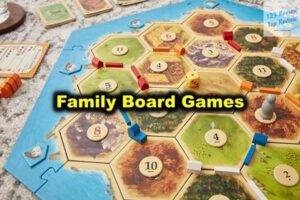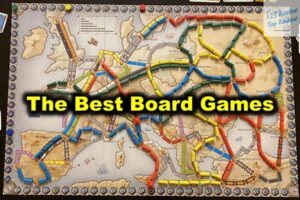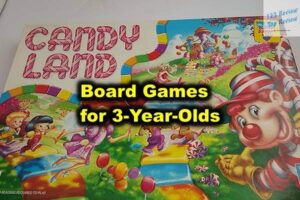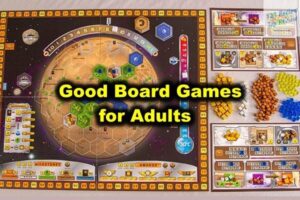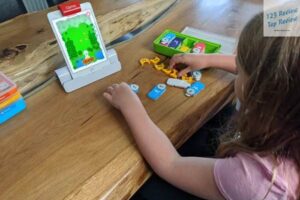“Hoot Owl Hoot” is a simple yet engaging game that encourages teamwork, color recognition, and strategic thinking. Aimed at children ages 4 and up, the game is perfect for introducing younger players to the concept of cooperative play.
Overview of Hoot Owl Hoot
Hoot Owl Hoot is a delightful cooperative board game designed with young children in mind, where players work together to help a group of owls return to their nest before the sun rises. Created by Peaceable Kingdom, the game has become a beloved favorite among families, educators, and caregivers for its engaging gameplay, educational benefits, and emphasis on teamwork. Unlike many traditional board games that focus on competition, Hoot Owl Hoot fosters a sense of collaboration and shared goals, making it a unique and enriching experience for children.
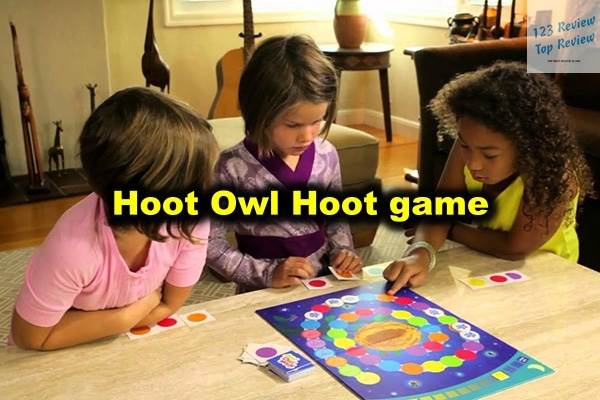
The game is simple enough for young players to grasp quickly but offers enough variation and challenge to keep them engaged. As players work together to move the owls along a colorful path toward their nest, they develop essential skills such as color recognition, strategic thinking, and cooperative problem-solving. The game’s whimsical design and charming theme add to its appeal, making it an enjoyable activity for children and adults alike.
Game Components
Hoot Owl Hoot comes with a set of high-quality components that are thoughtfully designed to be both visually appealing and easy for young children to handle. The components include:
- 6 Owl Tokens: Each token represents a different owl that players must guide back to the nest. The tokens are brightly colored and feature adorable illustrations of owls, which add a playful element to the game.
- 1 Sun Token: This token represents the rising sun, which players must race against as they try to get all the owls home before daylight. The sun token is moved forward whenever a player draws a sun card, adding tension and urgency to the game.
- 50 Color-Coded Cards: These cards are the heart of the gameplay. They come in six different colors, each corresponding to a colored space on the game board. There are also sun cards, which advance the sun token and bring the game closer to its end.
- 1 Game Board: The game board is beautifully illustrated with a winding path that leads from the start to the owls’ nest. The path is made up of different colored spaces, and players must move the owls along this path based on the cards they draw. The board also features a track for the sun token, which moves closer to the nest with each sun card drawn.
The components are made from durable materials that can withstand repeated play, making Hoot Owl Hoot a game that families can enjoy for years. The vibrant colors and cute illustrations make the game visually engaging, which helps to capture and maintain the attention of young players.
Number of Players and Age Recommendation
Hoot Owl Hoot is designed for 2 to 4 players, making it an excellent choice for small group play, whether in a family setting or a classroom environment. The game is recommended for children aged 4 and up, though younger children can easily participate with a little guidance from older players or adults. The simplicity of the rules and the cooperative nature of the game make it accessible to a wide age range, allowing siblings of different ages to play together without frustration.
The game’s flexibility in the number of players also means it can be adapted to different group sizes, whether it’s just two children playing together or a full family game night. The collaborative aspect ensures that everyone can participate equally, regardless of their age or skill level, which helps foster a positive and inclusive play experience.
Playtime Duration
One of the appealing features of Hoot Owl Hoot is its relatively short playtime, which typically ranges from 15 to 20 minutes. This makes it an ideal game for young children, who may have shorter attention spans and may not be able to stay engaged in longer games. The quick playtime also makes it easy to fit the game into busy schedules, whether it’s a quick activity before bedtime or a fun break during the day.
The game’s duration is just long enough to be satisfying but short enough to keep children’s interest. Additionally, the possibility of playing multiple rounds in one session adds to the game’s replayability, as children often want to play again to see if they can improve their teamwork and strategy.
Gameplay Mechanics
Steps of a Turn
The gameplay of Hoot Owl Hoot is designed to be simple and intuitive, making it easy for young children to learn and play. The game follows a turn-based structure, where each player takes a turn drawing a card from the deck and then taking the appropriate action based on the card drawn.
- Draw a Card: On their turn, a player draws a card from the top of the deck. The card will either be a color card or a sun card.
- Play the Card:
- Color Card: If the player draws a color card, they choose one of the owl tokens on the board and move it to the next available space of that color. For example, if the player draws a blue card, they will move any owl to the next blue space on the path. If there are multiple owls to choose from, the player must decide which one to move, adding a strategic element to the game.
- Sun Card: If the player draws a sun card, they must move the sun token one space forward on the sun track. This signifies that time is running out, and the players must hurry to get the owls back to the nest before the sun token reaches the end of the track.
- Discuss Strategy: Since Hoot Owl Hoot is a cooperative game, players are encouraged to discuss their choices and work together to decide the best moves. This collaborative approach helps build communication skills and allows players to learn from each other.
- Pass the Turn: After playing their card, the player passes the turn to the next player, and the cycle continues until all the owls are safely in the nest or the sun reaches the final space on the track.
Types of Cards
The deck of cards in Hoot Owl Hoot is divided into two main types: color cards and sun cards. Each type of card plays a crucial role in the game’s mechanics and adds to the overall challenge.
- Color Cards: These cards come in six different colors: red, orange, yellow, green, blue, and purple. The color cards dictate how the owls move along the path on the game board. When a player draws a color card, they move one owl to the next space on the board that matches the color of the card. The distribution of colors in the deck is designed to ensure a balance between all colors, requiring players to plan their moves carefully to optimize the owls’ progress.
- Sun Cards: The sun cards are the game’s timer, adding a sense of urgency to the players’ efforts. Every time a sun card is drawn, the sun token is moved one space closer to the end of the sun track. If the sun token reaches the final space before all the owls are in the nest, the game is over, and the players lose. The presence of sun cards in the deck forces players to think strategically about which owls to move and when, as they must balance the need to advance the owls with the risk of the sun rising too soon.
Moving Owls and Sun Token
The movement of the owls and the sun token is the central mechanic of the game, and it requires players to make thoughtful decisions on each turn.
- Moving Owls: When a color card is drawn, the player must decide which owl to move to the corresponding colored space. The choice of which owl to move can be influenced by several factors, such as how far each owl is from the nest, the distribution of colors on the remaining path, and the likelihood of drawing certain colors in future turns. This decision-making process encourages players to think ahead and consider the potential outcomes of their choices.
- Moving the Sun Token: The sun token represents the passage of time, and its movement is triggered by the drawing of sun cards. As the sun token moves closer to the final space on the track, the tension in the game increases, as players must race to get the owls to the nest before time runs out. The placement of the sun token on the track is a constant reminder of the ticking clock, adding an element of suspense to the gameplay.
The combination of moving the owls and the sun token creates a dynamic and engaging gameplay experience that challenges players to work together and think strategically. The cooperative nature of the game means that players must communicate and collaborate to make the best decisions for the group, fostering a sense of teamwork and shared accomplishment.
Cooperative Nature of the Game
Teamwork in Hoot Owl Hoot
One of the standout features of Hoot Owl Hoot is its cooperative gameplay, which sets it apart from many other children’s board games. In Hoot Owl Hoot, there are no individual winners or losers; instead, all players work together towards a common goal. This emphasis on teamwork makes the game an excellent tool for teaching young children the value of cooperation and collaboration.
Throughout the game, players are encouraged to discuss their options, share their ideas, and make decisions as a group. This collaborative approach helps children develop important social skills, such as effective communication, active listening, and compromise. By working together, players learn that they can achieve more as a team than they could on their own, reinforcing the idea that cooperation is key to success.
The cooperative nature of Hoot Owl Hoot also means that the game is less likely to lead to frustration or disappointment, as there is no direct competition between players. Instead of focusing on individual achievements, players celebrate their collective success when they manage to get all the owls back to the nest before the sun rises. This creates a positive and supportive atmosphere, where everyone is motivated to help each other and work towards a shared objective.
Benefits of Cooperative Play for Children
Cooperative play offers a wide range of developmental benefits for children, making games like Hoot Owl Hoot valuable tools for both parents and educators. Some of the key benefits of cooperative play include:
- Social Skill Development: Cooperative games help children develop essential social skills, such as taking turns, sharing, and working as part of a team. These skills are important for building positive relationships with peers and for functioning effectively in group settings.
- Empathy and Perspective-Taking: In a cooperative game, players must consider the needs and ideas of others, which helps them develop empathy and understand different perspectives. This is particularly important for young children, who are still learning to navigate social interactions and build emotional intelligence.
- Reduced Anxiety and Stress: Because there is no direct competition in cooperative games, children are less likely to experience the anxiety or stress that can sometimes accompany competitive play. This makes cooperative games a great option for children who may be sensitive to losing or who prefer a more relaxed and supportive play environment.
- Encouragement of Positive Behavior: Cooperative games like Hoot Owl Hoot encourage positive behaviors, such as helping others, being patient, and working towards a common goal. These behaviors are reinforced throughout the game, helping children internalize these values and carry them into other aspects of their lives.
- Inclusive Play Experience: The inclusive nature of cooperative games ensures that all players feel valued and included, regardless of their skill level or experience. This is particularly beneficial in group settings, where players may have different abilities or levels of familiarity with the game.
Overall, the cooperative nature of Hoot Owl Hoot makes it an excellent choice for families and educators who want to promote positive social interactions and teamwork among children. The game’s focus on collaboration rather than competition helps create a supportive and inclusive play environment that is both fun and educational.
Difficulty Levels
Beginner, Intermediate, and Challenge Modes
Hoot Owl Hoot offers three different difficulty levels—Beginner, Intermediate, and Challenge—allowing the game to grow with the players and remain engaging as they become more familiar with the mechanics. These varying difficulty levels also make the game accessible to a wide range of ages and skill levels, ensuring that it can be enjoyed by both younger children and older players who are looking for more of a challenge.
- Beginner Mode: In Beginner mode, the game is set up with fewer sun cards in the deck, making it easier for players to get all the owls back to the nest before the sun rises. This mode is ideal for very young children or those who are new to the game, as it allows them to learn the basics without feeling overwhelmed. The reduced number of sun cards gives players more time to move the owls and makes it more likely that they will succeed, which can help build confidence and encourage continued play.
- Intermediate Mode: Intermediate mode adds more sun cards to the deck, increasing the difficulty and requiring players to think more strategically about their moves. This mode is suitable for players who have mastered the basics of the game and are ready for a greater challenge. The additional sun cards create more urgency, as players have less time to get the owls to the nest, forcing them to plan their moves more carefully and work more closely as a team.
- Challenge Mode: Challenge mode is the most difficult setting, using all the sun cards in the deck. In this mode, players must be highly strategic and cooperative to succeed, as the sun advances more quickly, leaving little room for error. This mode is perfect for older children, experienced players, or those who are looking for a more intense and competitive experience. The increased difficulty in Challenge mode tests players’ decision-making skills and their ability to work together under pressure.
How Difficulty Affects Gameplay
The different difficulty levels in Hoot Owl Hoot have a significant impact on the gameplay experience, allowing the game to be tailored to the needs and preferences of the players. In Beginner mode, the game is more relaxed and forgiving, making it ideal for teaching the basic rules and mechanics to new players. The slower pace allows players to focus on learning how to move the owls and understand the consequences of drawing sun cards without feeling rushed.
As players progress to Intermediate and Challenge modes, the game becomes more intense and requires more advanced strategic thinking. Players must carefully consider their moves, taking into account the position of the sun token, the distribution of color cards in the deck, and the proximity of each owl to the nest. The increased difficulty also encourages greater collaboration and communication among players, as they must work together more closely to succeed.
The ability to adjust the difficulty level makes Hoot Owl Hoot a versatile game that can be enjoyed by players of different ages and skill levels. It also ensures that the game remains engaging and challenging over time, as players can gradually increase the difficulty as they become more experienced. This adaptability is one of the reasons why Hoot Owl Hoot is such a popular choice for families and educators, as it can be easily customized to suit the needs of different players.
Educational Value
Color Recognition and Matching Skills
Hoot Owl Hoot is an excellent tool for developing color recognition and matching skills in young children. As players draw and play color cards, they must match the color on the card to the corresponding spaces on the game board. This simple yet effective mechanic helps reinforce basic color concepts in a fun and interactive way.
For very young children who are just learning their colors, the game provides a playful and engaging way to practice color recognition. The repetition of drawing and matching colors helps to solidify their understanding, while the visual and tactile elements of the game make the learning experience more concrete and memorable.
As children become more familiar with the game, they can begin to apply their color recognition skills more strategically, thinking ahead about which colors are most likely to appear and planning their moves accordingly. This adds an additional layer of cognitive development, as players must use their knowledge of colors to make informed decisions and optimize their chances of success.
Decision-Making and Strategy Development
In addition to color recognition, Hoot Owl Hoot also promotes decision-making and strategy development. Each turn presents players with choices about which owl to move and how to best advance the group toward the goal. These decisions require players to think critically about the current state of the game, consider the potential outcomes of different actions, and weigh the risks and benefits of each option.
For example, a player might have to decide whether to move an owl that is close to the nest or one that is farther away but could potentially land on a space that would allow it to “fly” over other spaces. These types of decisions encourage players to think ahead and plan their moves carefully, developing their ability to strategize and make thoughtful choices.
The cooperative nature of the game also enhances the development of decision-making skills, as players must discuss their options and come to a consensus about the best course of action. This process of group decision-making helps children learn to articulate their thoughts, listen to others, and work collaboratively to solve problems.
Overall, Hoot Owl Hoot provides a rich and engaging environment for developing a wide range of cognitive and social skills, making it an excellent educational tool for young children. The combination of color recognition, strategic thinking, and cooperative play offers a holistic learning experience that is both enjoyable and beneficial.
Game Review Highlights
Positive Aspects
Hoot Owl Hoot has received widespread acclaim for its innovative design, educational value, and engaging gameplay. One of the most frequently praised aspects of the game is its cooperative nature, which makes it a refreshing alternative to the competitive games that are common in the children’s game market. Parents and educators appreciate the way the game encourages teamwork, communication, and shared goals, helping children develop important social skills in a fun and supportive environment.
The simplicity of the game’s rules and mechanics is another highlight, as it makes the game accessible to young children while still providing enough depth to keep them engaged. The short playtime is also a major plus, as it allows for quick and satisfying game sessions that fit easily into busy schedules.
In addition to its educational benefits, Hoot Owl Hoot is also praised for its high-quality components and attractive design. The bright colors, cute owl tokens, and beautifully illustrated game board make the game visually appealing and enjoyable to play. The durable materials ensure that the game can withstand repeated play, making it a long-lasting addition to any family’s game collection.
Critiques and Suggestions
While Hoot Owl Hoot is generally well-received, some players have noted that the game may be too simple for older children or those who are more experienced with board games. The different difficulty levels help to address this concern, but even the Challenge mode may not provide enough complexity for some players.
A suggestion for improvement could be the inclusion of additional challenges or expansions that add more variety to the gameplay. For example, introducing new types of cards, additional obstacles, or alternative game modes could increase the game’s replayability and appeal to a broader range of players.
Another critique is that the game’s outcome can sometimes feel predetermined, especially in the easier modes where the players are likely to win. This can reduce the sense of excitement and unpredictability that some players seek in a game. However, this is less of an issue in the more challenging modes, where careful planning and cooperation are essential for success.
Comparison to Other Children’s Games
When compared to other children’s games, Hoot Owl Hoot stands out for its cooperative gameplay and emphasis on teamwork. Many children’s games, such as “Candy Land” or “Chutes and Ladders,” are purely competitive and rely heavily on chance, which can sometimes lead to frustration or disappointment for younger players. In contrast, Hoot Owl Hoot’s cooperative nature ensures that all players work together towards a common goal, creating a more inclusive and positive play experience.
Hoot Owl Hoot also offers more educational value than many other children’s games, as it promotes important skills such as color recognition, strategic thinking, and social cooperation. While other games may focus primarily on entertainment, Hoot Owl Hoot successfully combines fun with learning, making it a popular choice among parents and educators who want to provide children with a meaningful and enriching play experience.
Overall, Hoot Owl Hoot compares favorably to other games in the children’s game market, offering a unique and valuable alternative to more traditional competitive games. Its combination of cooperative gameplay, educational benefits, and engaging design make it a standout choice for families and educators alike.
Awards and Recognition
Notable Awards Received
Hoot Owl Hoot has garnered several awards and accolades, reflecting its quality and appeal as a children’s game. Some of the notable awards it has received include:
- Oppenheim Toy Portfolio Gold Award: This prestigious award is given to high-quality toys and games that offer exceptional play value and educational benefits. Hoot Owl Hoot’s cooperative gameplay and educational focus helped it earn this recognition, making it a top choice for parents and educators.
- Dr. Toy’s Best Green Product Award: Hoot Owl Hoot was recognized by Dr. Toy for its environmentally friendly design and production. The game’s components are made from sustainable materials, and Peaceable Kingdom is known for its commitment to eco-friendly practices, which contributed to the game receiving this award.
- Parents’ Choice Silver Honor: This award is given to products that are judged to be among the highest-quality offerings for children. Hoot Owl Hoot’s combination of fun, educational value, and cooperative gameplay earned it a Silver Honor from Parents’ Choice, further solidifying its reputation as a top children’s game.
Critical Acclaim from Parents and Educators
In addition to its awards, Hoot Owl Hoot has received widespread praise from parents, educators, and game reviewers for its innovative and beneficial design. Many parents appreciate the way the game encourages their children to work together and develop important social skills, while educators value its educational content and the way it can be used as a teaching tool in the classroom.
Reviewers have also highlighted the game’s ability to engage children of different ages and skill levels, making it a versatile choice for families with multiple children. The game’s ability to grow with the players, thanks to its adjustable difficulty levels, is frequently cited as a major strength, as it ensures that the game remains challenging and enjoyable over time.
Overall, Hoot Owl Hoot’s critical acclaim reflects its success in providing a fun, educational, and cooperative gaming experience for young children. Its numerous awards and positive reviews make it a highly recommended choice for parents and educators who are looking for a quality game that offers more than just entertainment.
Purchasing Information
Retail Price
Hoot Owl Hoot is priced competitively for a children’s board game, with a typical retail price ranging from $15 to $20, depending on the retailer and any promotions or discounts that may be available. The game’s affordability, combined with its high-quality components and educational value, makes it an excellent investment for families and educators looking for a game that will provide lasting enjoyment and developmental benefits.
Where to Buy Hoot Owl Hoot
Hoot Owl Hoot is widely available at major retailers, both online and in brick-and-mortar stores. Some of the best places to purchase the game include:
- Amazon: Amazon offers a convenient way to purchase Hoot Owl Hoot, often with the option for free shipping for Prime members. The game is frequently featured in Amazon’s best-seller lists for children’s games, and customer reviews are generally very positive.
- Target: Target carries Hoot Owl Hoot both online and in stores, making it easy to pick up the game during a regular shopping trip. Target often offers promotions or discounts on toys and games, so it’s worth checking for deals.
- Walmart: Walmart also offers Hoot Owl Hoot at competitive prices, with the option to purchase online or in-store. Walmart’s price match policy can also help ensure you get the best deal on the game.
- Local Toy Stores: Many local and specialty toy stores carry Hoot Owl Hoot, and purchasing from these stores can be a great way to support small businesses in your community. Additionally, staff at these stores may be able to provide personalized recommendations and insights about the game.
Overall, Hoot Owl Hoot is an accessible and affordable game that offers significant value for its price. Whether purchased online or in a physical store, it is a worthwhile addition to any family’s game collection, offering hours of fun and educational play.
